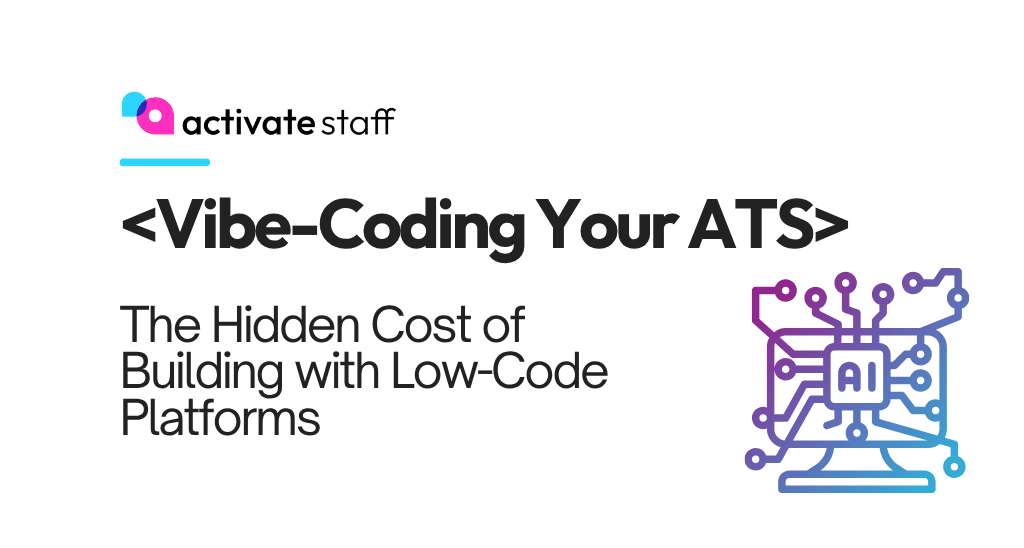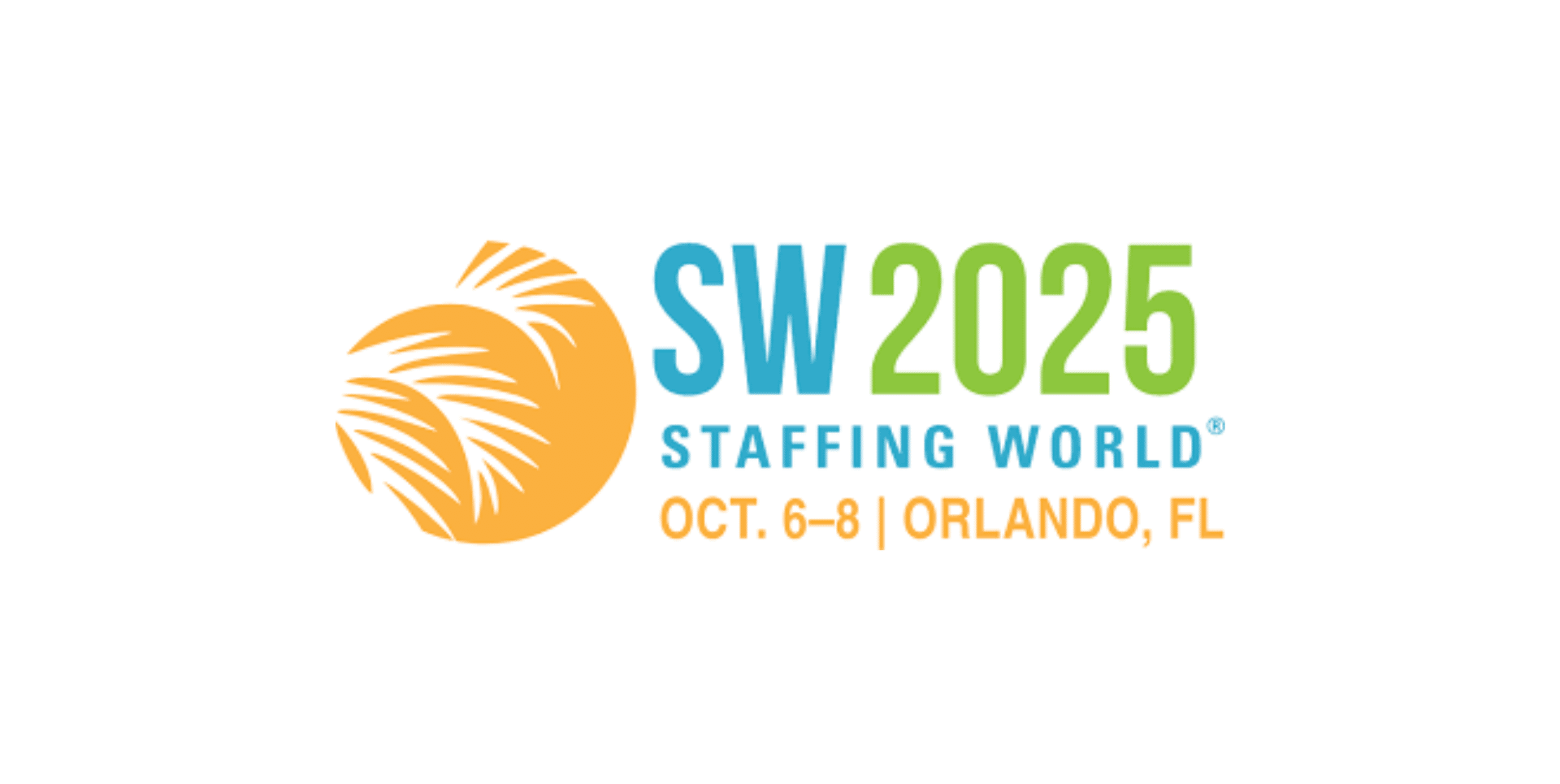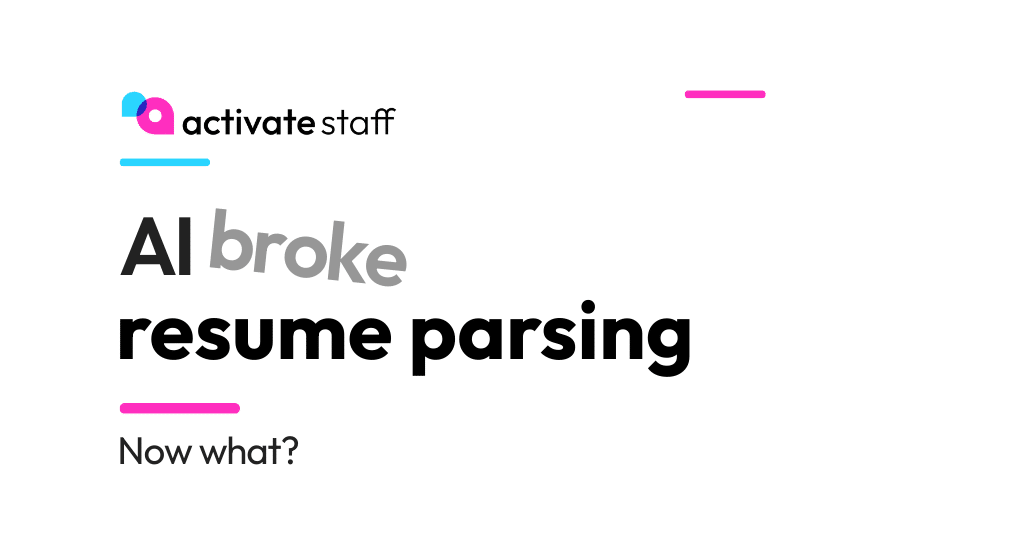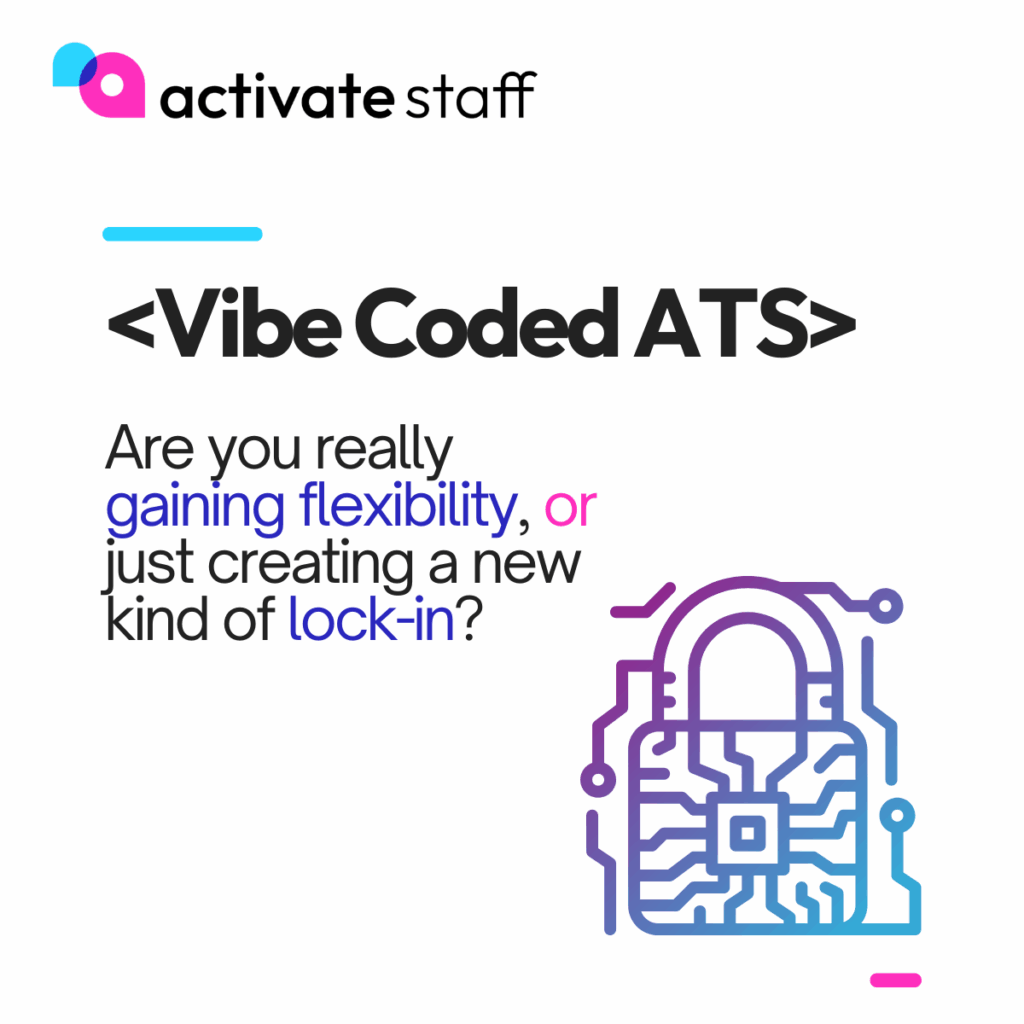
But as more agencies experiment with vibe-coding their own internal systems, a familiar question resurfaces:
Are you really gaining flexibility, or just creating a new kind of lock-in?
What "Vibe Coding" Really Means
Vibe coding refers to using low-code/no code (such as lovable, replit, bolt) or visual development platforms (think Airtable, Glide, Retool, or n8n) to build custom features or even a lightweight ATS. These tools allow non-engineers to prototype fast, integrate APIs, and design automations without a deep technical background.
For a staffing firm with tech-curious operators or a scrappy developer on the team, the appeal is obvious:
- You can design around exact workflows.
- You don’t wait on vendors or IT backlogs.
- You can ship changes in hours instead of months.
That speed feels empowering until the system needs to scale, integrate, doesn’t work, or comply with enterprise-grade standards or laws.
The Value of Vibe-Coding Your ATS
Let’s be clear, vibe coding isn’t all hype. Done right, it can deliver real advantages:
- Rapid prototyping: Test workflows, dashboards, and automations quickly before committing to full development.
- Process Innovation: Build internal tools recruiters actually love using.
- Lower Initial Cost: No need for a full engineering team.
- Proof-of-Concept for Investment: Demonstrate value and get buy-in for large tech initiatives.
For smaller agencies or niche teams, that agility can be a competitive edge.
The Pitfalls of a Vibe-Built ATS
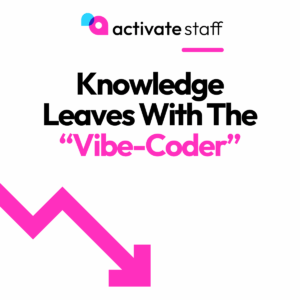
1. Data Silos and Fragile Integrations
Vibe-build systems often rely on custom connections or brittle automations. A single field name change in an API can break your workflows overnight. Integrating deeply with payroll, credentialing, CRMs, or VMS systems becomes a maintenance nightmare.
2. Compliance and Security Risks
Low-code platforms weren’t designed for HIPAA, SOC2, or GDPR compliance at scale. Agencies in healthcare or light industrial risk exposing sensitive worker data without realizing it.
3. Scalability Walls
What feels fast at 10 recruiters can collapse under the data load of 100. Query speed, audit trails, and user management become limiting factors that slow operations, precisely when you’re trying to grow.
4. Hidden Technical Debt
Custom logic buried in visual workflows is notoriously hard to document or transfer. When the original “vibe-coder” leaves, so does your institutional knowledge. The next iteration becomes a full rebuild.
5. Vendor Lock-In
You may think you’re building your own tech, but you’re still at the mercy of the platform’s uptime, pricing, and roadmap. If your provider sunsets a feature, your “custom” ATS may go dark.
6. Falling Behind on Technology
Without dedicated product and engineering resources, agencies find it difficult to leverage the latest technologies, from AI matching to workflow automation, and risk falling behind competitors who partner with specialized platforms.
Why Purpose-Build Platforms Win Long Term
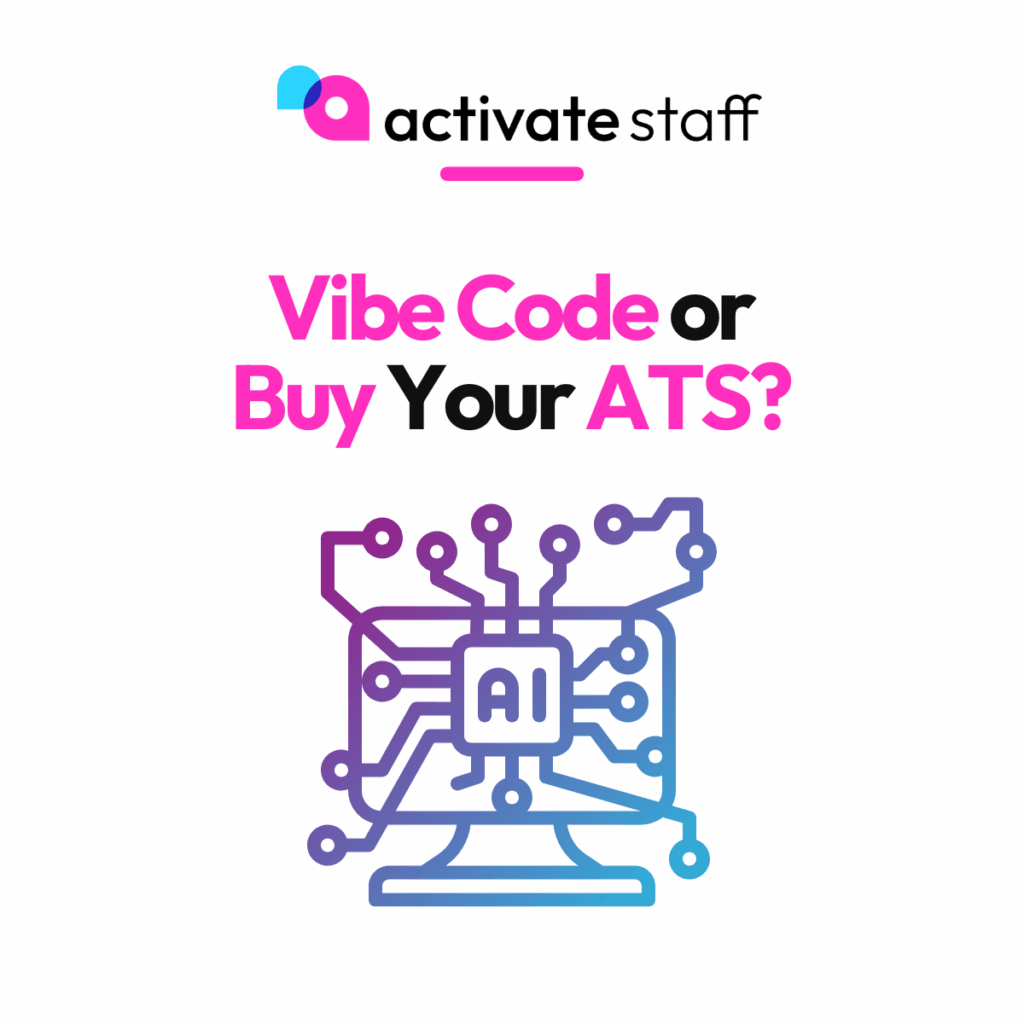
- Purpose-Built Architecture: The core ATS, candidate app, and client portal are engineered to work together, removing integration fragility and data duplication.
- Continuous Innovation: A dedicated product team keeps your system evolving, integrating the latest AI, automation, and analytics so you can focus on growing your agency, not development upkeep.
- Enterprise-Grade Security: Platforms like ActivateStaff are built with robust permission controls, encrypted data handling, and compliance frameworks baked in from day one.
- Scalability and Performance: Designed to support thousands of users, ensuring recruiter speed and data reliability even as your agency expands.
- Open APIs and Data Ownership: You retain full control of your data, with APIs that let you extend, not replace, your system when you need something custom.
- Faster ROI: Implementation takes weeks, not years, so you can start realizing gains in recruiter productivity and client satisfaction sooner.
For agency executives balancing innovation with stability, a purpose-built platform provides the foundation for experimentation, without introducing the fragility that vibe coding often creates.
The Smarter Middle Ground
You don’t have to choose between a rigid vendor ATS and an unmaintainable vibe-coded one. The smartest agencies do both:
- Use low-code tools for experimentation and workflow automation.
- Anchor core operations, recruiter tools, candidate data, and client portals in a purpose-built staffing platform with open APIs.
- Work with a vendor who understands the value of your data and ensures you have full control of it.
That hybrid model gives you innovation without chaos, and customization without the risk.
Final Thought
Vibe coding gives staffing firms a taste of control, but without solid architecture, it’s a temporary fix that can quietly erode productivity and compliance. Before you “vibe-code your own ATS,” ask the harder question: Will this still serve us when we double in size, add new divisions, or face stricter data requirements? And even more fundamental: do you really want to become a software development shop on top of running a staffing agency?
The agencies that scale don’t win because they built the most clever internal toolchain, they win because they chose technology that let them focus on sales, recruiting, and client experience, not maintaining workflows, debugging scripts, or rebuilding core systems every 18 months.
At ActivateStaff, we believe agencies should innovate where it differentiates them and rely on a staffing platform where it compounds value. Our platform gives you the flexibility to customize and integrate, without sacrificing security, performance, or product velocity. You get the benefits of modern tech without having to build and maintain it yourself, and your team stays focused on what actually drives revenue: placing great people faster.


